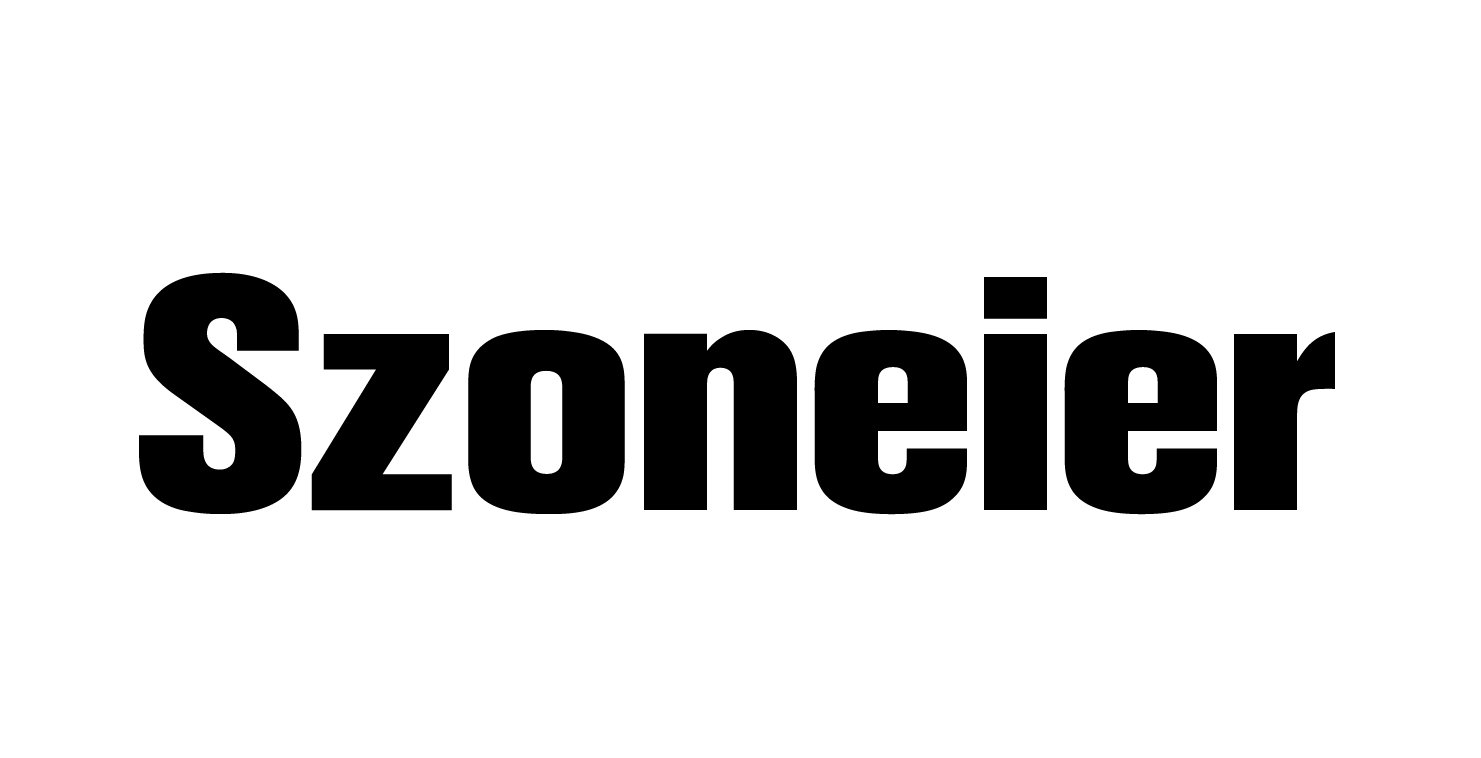Luxury hotels have evolved beyond mere accommodation—they are now a sensory experience. From the scent of essential oils in the lobby to the feel of bed linens on the skin, every detail contributes to a guest’s emotional connection. Among these elements, one silent performer has been winning hearts: linen fabric. With its rich texture, breathability, natural sheen, and eco-credibility, linen has quietly become the gold standard in high-end hospitality textiles.
Linen fabric offers unmatched advantages for luxury hotel textile applications due to its breathability, durability, aesthetic appeal, and eco-friendliness. It enhances guest comfort, supports sustainable procurement, and withstands rigorous commercial laundering, making it ideal for bedding, curtains, table linens, and spa setups.
A five-star resort in Bali once received complaints about excessive heat retention in rooms during the dry season. Switching from high-thread-count cotton to enzyme-washed Belgian linen sheets reduced guest discomfort and dropped the linen replacement rate by 23% over six months. That quiet change earned more 5-star reviews than any other refurbishment that year.
Let’s explore the material advantages that are redefining hospitality excellence—one fabric fiber at a time.
What Makes Linen Fabric the Preferred Choice for Luxury Hotel Textiles?
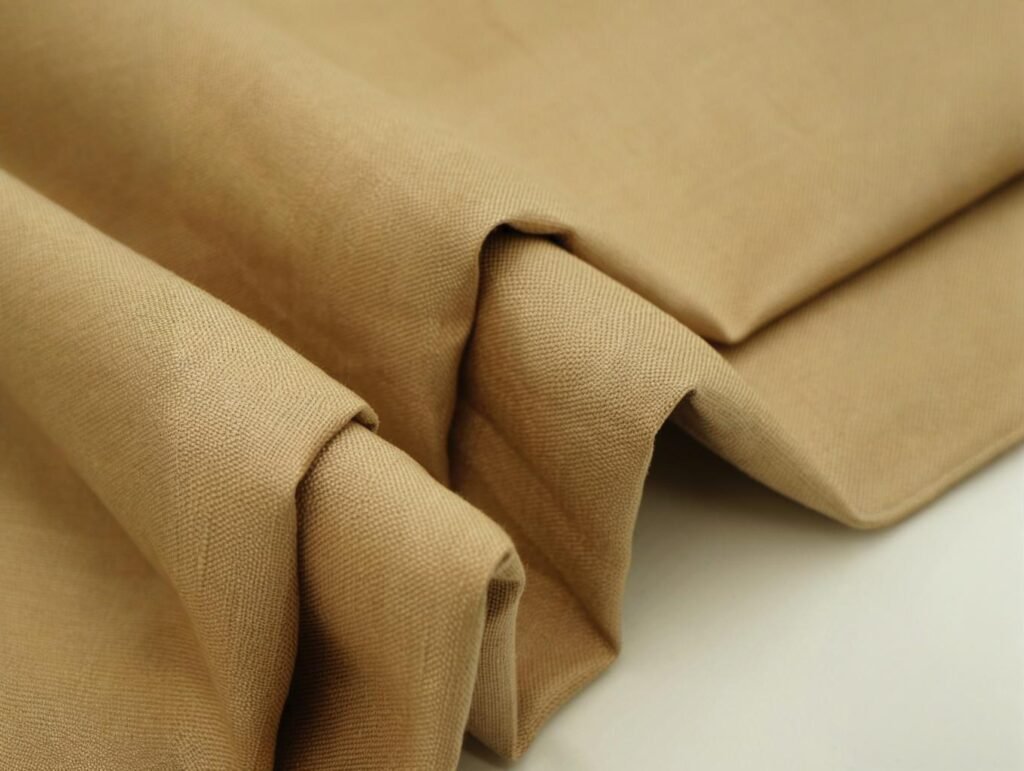
Linen fabric, derived from the flax plant, brings a unique combination of softness, natural luxury, and performance that elevates the guest experience. Unlike synthetic blends or even high-thread-count cotton, linen’s breathable structure and moisture-wicking properties keep guests cooler, drier, and more comfortable across climates.
Linen is preferred in luxury hotel textiles for its thermoregulation, tactile comfort, natural luster, hypoallergenic quality, and sustainability profile. It provides an elevated guest experience while aligning with the eco-conscious values of modern luxury brands.
Why Linen Outperforms Other Fabrics in Hotels
- Thermoregulation for Year-Round Comfort
Linen fibers are hollow, allowing airflow and moisture to pass through, making it ideal for both hot and cool climates. Linen absorbs 20% of its weight in moisture before feeling damp.
- Natural Texture and Luxe Appeal
The crisp, matte-finish aesthetic of linen appeals to minimalist and modern luxury themes. It holds color beautifully, especially in neutral tones favored in 5-star hotels.
- Hypoallergenic and Anti-Static
Linen resists dust mites, molds, and allergens—making it a top choice for hotels with wellness branding or allergy-sensitive clientele.
- Environmental Edge
Flax requires significantly less water and pesticide use compared to cotton. Linen’s low-impact production helps hotels meet LEED or Green Globe standards.
| Comparison of Linen with Other Common Hotel Fabrics |
| Feature | Linen | Cotton (High TC) | Polyester Blend |
|---|---|---|---|
| Breathability | Excellent | Good | Poor |
| Moisture-wicking | High | Medium | Low |
| Sustainability | Very high | Medium | Low |
| Wrinkle resistance | Moderate (can be washed/pressed) | High with treatment | High |
| Aesthetic appeal | Natural & textured | Smooth & crisp | Smooth but synthetic |
Case Highlight:
A Dubai luxury hotel rebranded its suites with stone-washed linen curtains, bedding, and sofa covers. Not only did guests report higher satisfaction in post-stay surveys, but the hotel also received LEED Silver status for textile-related sustainability upgrades.
Expert Insight: Linen isn’t for budget-focused interiors. But for brands offering calm luxury or biophilic design experiences, its benefits are unmatched.
How Does Linen Compare to Cotton and Polyester in Hotel Bedding and Towels?
In luxury hospitality, the choice of textile affects more than sleep—it influences branding, guest perception, and operational costs. Linen, cotton, and polyester each offer distinct advantages, but they serve very different strategic goals.
Linen offers superior breathability, environmental impact, and long-term durability compared to cotton and polyester, while cotton is more wrinkle-resistant and polyester excels in cost efficiency. For high-end hotel applications, linen consistently wins in tactile experience and guest comfort.
Fabric Face-Off in Hospitality Applications
- Bedding
| Feature | Linen | Cotton | Polyester |
|---|---|---|---|
| Feel | Textured, breathable | Smooth, crisp | Slick, less natural |
| Temperature | Cool in heat, warm in cold | Neutral | Traps heat |
| Lifecycle Cost | Medium upfront, long use | Moderate | Low cost, frequent replace |
| Brand Perception | Eco-luxury, refined | Standard luxury | Budget/functional |
- Towels
While less common than cotton, linen towels (especially blends) are gaining attention for their exfoliating feel, lightness, and fast-drying qualities—ideal for spa or beach areas.
| Feature | Linen Towels | Cotton Towels | Microfiber/Polyester |
|---|---|---|---|
| Drying Speed | Very fast | Medium | Very fast |
| Weight | Light | Medium to heavy | Ultra-light |
| Guest Experience | Crisp, airy | Soft, plush | Slick, synthetic feel |
| Odor Control | Excellent | Moderate | Poor (traps bacteria) |
- Environmental Comparison
| Environmental Metric | Linen (Flax) | Cotton | Polyester |
|---|---|---|---|
| Water usage per kg | ~650 liters | ~10,000 liters | Negligible (synthetic) |
| Biodegradability | Fully biodegradable | Biodegradable | Non-biodegradable |
| CO₂ footprint | Low | High | Very high |
Case Study:
A wellness resort in New Zealand replaced all cotton pillowcases with enzyme-washed French linen. Not only did guest skin comfort scores improve (as reported in exit surveys), but housekeeping reported 33% faster drying times and a 30% lower reorder rate due to fabric durability.
Fabric Decision Tip: For flagship suites or spa zones, linen enhances perceived value and lowers linen turnover rate. For high-occupancy standard rooms, cotton may still dominate.
Which Types of Linen Are Best Suited for Hotel Applications Like Bedding, Curtains, and Tablecloths?
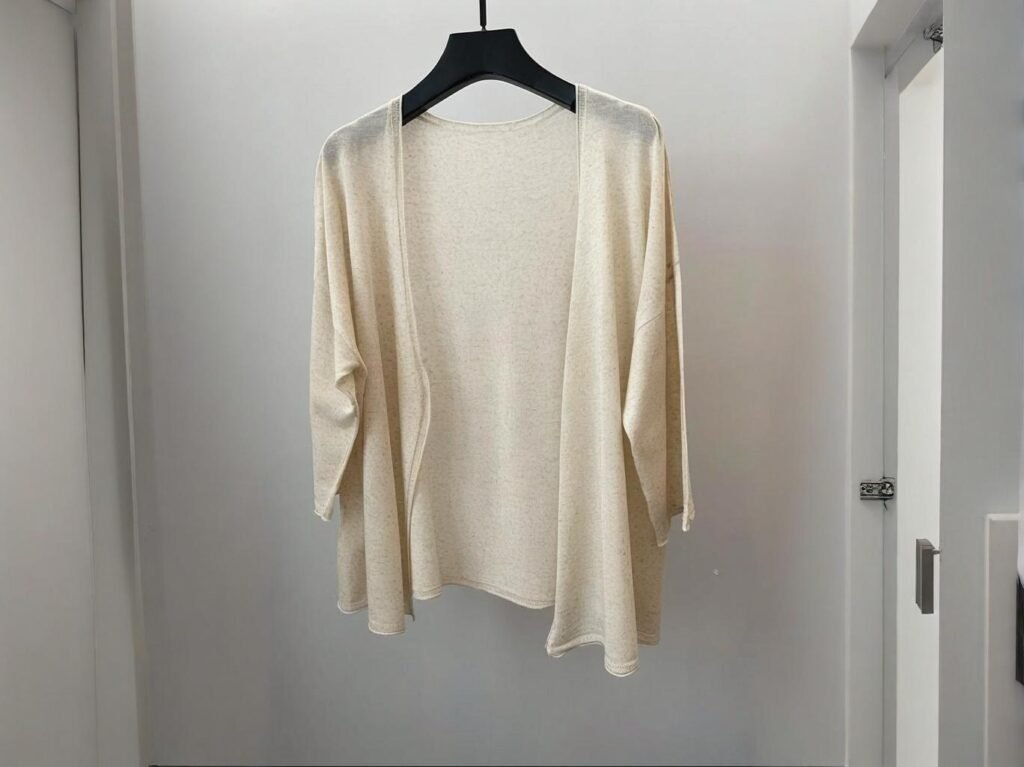
Not all linen is created equal. The fiber length, weave density, GSM, and finish all affect how linen performs in specific hotel environments. Selecting the appropriate type of linen for each application ensures optimal guest experience, durability, and ease of maintenance.
The best types of linen for hotels vary by use: lightweight plain-weave linen suits bedding, midweight twill or herringbone works for curtains, and heavier GSM damask linen is ideal for tablecloths. The right match balances feel, longevity, and laundering behavior.
Application-Specific Linen Selection Guide
- Bedding & Pillowcases
| Fabric Type | GSM Range | Finish Type | Key Features |
|---|---|---|---|
| Plain Weave Linen | 120–150 GSM | Enzyme-washed | Soft touch, breathable, low lint |
| Linen-Cotton Blend | 140–160 GSM | Reactive dyed | Improved wrinkle resistance, budget-friendly |
| Stone-washed Linen | 150–170 GSM | Pre-softened | Vintage feel, good for premium suites |
Key Considerations:
- Breathability for warm climates
- Softness over repeated washes
- Reduced pilling for longer lifecycle
- Curtains & Drapes
| Fabric Type | GSM Range | Weave | Feature |
|---|---|---|---|
| Herringbone Linen | 180–240 GSM | Decorative | Textured visual for upscale interior styling |
| Twill Weave Linen | 200–260 GSM | Opaque weave | Better drape, natural crease resistance |
| Blended Blackout Linen | 250+ GSM | Double-layer | Light blocking for guest room sleep quality |
Key Considerations:
- Room-darkening capability
- Compatibility with interior design themes
- Fire retardant treatment for safety standards
- Tablecloths & Napkins
| Fabric Type | GSM Range | Finish | Key Features |
|---|---|---|---|
| Damask Linen | 220–280 GSM | Stain-resistant | Elegant weave, suitable for fine dining |
| Hemstitched Linen | 200–240 GSM | Reactive dyed | Soft, absorbent, premium tactile feel |
| Blended Linen | 180–220 GSM | Easy iron | More durable for banquet settings |
Case Study:
A five-star restaurant inside a Tokyo hotel switched to damask linen tablecloths woven in Portugal. Post-implementation feedback showed a 17% increase in guest satisfaction on ambience and a reduction in replacement rate due to less staining compared to their previous cotton-linen blend.
Expert Tip: Ask your supplier for fabric samples finished with the actual post-treatment (enzyme wash, pigment dye, water resistance). Pre-treated linen behaves very differently from raw yardage.
Why Is GSM Important When Selecting Linen Fabric for Hotel Use?
GSM (grams per square meter) is the primary indicator of fabric weight and density. For hotels, GSM directly impacts comfort, opacity, maintenance, and durability. Choosing the wrong GSM can lead to poor draping, fast wear-out, or uncomfortable guest experiences.
GSM is a crucial metric in hotel textile selection as it determines linen fabric’s weight, softness, drape, and resistance to wear during commercial use. Different GSM levels are suitable for different hotel applications—lighter for bedding, mid-range for curtains, heavier for upholstery or high-traffic linens.
GSM and Hotel Application Match
- GSM Ranges by Functionality
| Use Case | Recommended GSM | Purpose |
|---|---|---|
| Pillowcases | 120–140 GSM | Light, breathable, skin-friendly |
| Flat Sheets | 140–160 GSM | Balanced softness and durability |
| Duvet Covers | 160–180 GSM | More structure, wrinkle recovery |
| Curtains | 200–250 GSM | Weighted drape, sound absorption |
| Upholstered Items | 260–320 GSM | Durability under stress, friction-resistant |
| Table Linens | 200–280 GSM | Absorbency, stain resistance, presentation |
- Why It Matters in Commercial Use
- Lighter GSM fabrics wear faster when washed frequently (e.g., <120 GSM bedsheets will degrade after 30–40 washes).
- Heavier GSM may feel stiff or retain more moisture, extending drying time and power usage.
- Mid-range GSM (140–180 GSM) tends to balance guest comfort with laundering efficiency.
- Real Hospitality Use Case:
A boutique hotel chain in Australia tested 130 GSM, 155 GSM, and 180 GSM linen flat sheets over 12 months. Here were the results:
| GSM Level | Softness Score (1–10) | Avg. Wash Cycles Until Replacement | Guest Review Avg (Linen) |
|---|---|---|---|
| 130 GSM | 9 | 55 cycles | 4.2 |
| 155 GSM | 8 | 75 cycles | 4.6 |
| 180 GSM | 6 | 95 cycles | 4.4 |
The hotel eventually adopted 155 GSM enzyme-washed linen—finding the sweet spot between guest comfort and cost efficiency.
Critical Note: Always request pre-washed GSM values, as some shrinkage (especially 5–10%) can affect final weight and performance post-wash.
Decision Tip: Don’t just go for “premium” GSM—go for the right GSM for each hotel function.
What Role Does Linen Play in Sustainable Hospitality Sourcing in 2025?
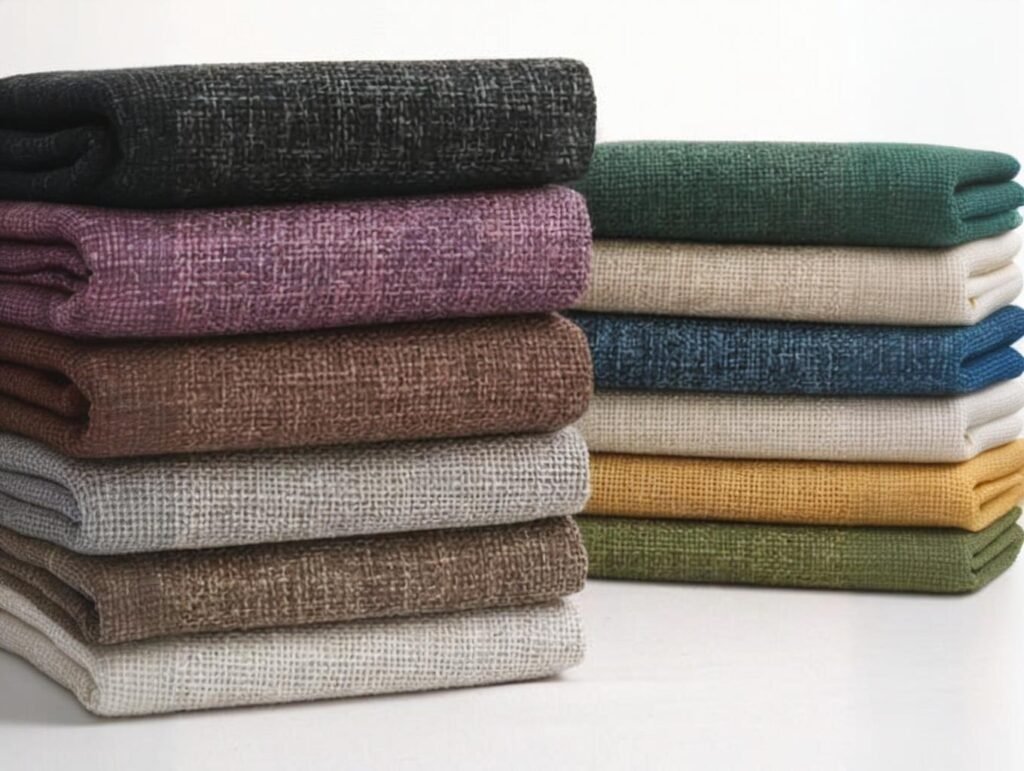
Sustainability is no longer a hotel buzzword—it’s a procurement standard. From international chains to boutique eco-resorts, properties are under growing pressure to reduce their environmental footprint. As hospitality brands pivot toward eco-conscious sourcing, linen has emerged as a cornerstone of textile sustainability strategies.
Linen plays a central role in sustainable hospitality sourcing in 2025 due to its low environmental impact, biodegradability, and compatibility with green certifications like OEKO-TEX and GOTS. Hotels use linen to meet ESG goals, reduce water consumption, and elevate their brand image as eco-responsible.
Linen’s Sustainability Advantages for Hotels
- Low-Impact Agriculture
- Flax (from which linen is made) requires 60–70% less water than cotton.
- Grows in cooler climates (e.g., France, Belgium) without heavy irrigation or chemical pesticides.
- Almost every part of the flax plant is used—zero-waste farming.
- Biodegradable & Circular
Unlike polyester and polycotton blends, linen is fully biodegradable in landfills and compost systems. End-of-life disposal aligns with circular economy principles.
- Energy-Efficient Processing
While initial processing (retting, spinning) consumes moderate energy, linen requires less frequent washing due to better odor resistance, which lowers energy costs during use.
Linen vs. Cotton vs. Polyester: Sustainability Metrics
| Metric | Linen | Cotton | Polyester |
|---|---|---|---|
| Water needed per kg | 650 L | 10,000 L | Minimal (synthetic) |
| Biodegradability | Yes (100%) | Yes (partial) | No |
| Pesticide dependency | Low | High | N/A |
| Carbon emissions per kg | 2.1 kg CO₂e | 3.6 kg CO₂e | 6.6 kg CO₂e |
| Certifications available | OEKO-TEX, GOTS | GOTS, Fairtrade | rPET (if recycled) |
- Common Certifications for Hotel Linen Products
| Certification | Benefit to Hotels |
|---|---|
| OEKO-TEX Standard 100 | Free of harmful substances, skin-safe |
| GOTS | Organic flax, certified chemical-free processing |
| FSC (for packaging) | Sustainably sourced boxes, tags, labels |
| ISO 14001 | Environmental management system certification |
Hotel Case Insight:
The Nordic Nature Hotel in Norway adopted 100% GOTS-certified linen for bedding and curtains. As a result, they were featured in multiple sustainability travel guides, increased direct bookings by 24%, and met Green Key certification benchmarks in under six months.
Pro Tip: Ask suppliers not only about fabric certification but also their production processes—eco-dyeing, solar-powered mills, water recycling—these add value to hotel sustainability narratives.
How Do Linen Fabrics Perform in High-Wash Commercial Laundry Settings?
Luxury hotels often face the challenge of balancing upscale aesthetics with operational durability. Fabrics must endure industrial washing machines, harsh detergents, high heat, and repeated folding—without fading, shrinking, or losing tactile appeal. This is where linen shines.
Linen performs exceptionally well in high-wash commercial laundry settings due to its strong fiber structure, natural resistance to pilling, and ability to soften with age without losing durability. While it may wrinkle more than synthetic fabrics, its lifespan often exceeds cotton under repeated use.
Linen’s Strength in Laundry Cycles
- Structural Integrity
- Flax fibers are 30% stronger than cotton, giving linen natural resistance to fiber breakdown under wash pressure.
- It softens over time without compromising tensile strength.
- Wrinkle Behavior: A Trade-Off
Yes, linen wrinkles more. But luxury hotels often embrace this look as a marker of authenticity and natural living—especially with stone-washed or enzyme-treated finishes.
- Laundry Performance Metrics
| Attribute | Linen Fabric | Cotton Fabric | Polyester Blend |
|---|---|---|---|
| Avg. cycles before damage | 100–150 washes | 60–90 washes | 80–120 washes |
| Colorfastness (after 50 washes) | Excellent (reactive dye) | Good | Very Good |
| Shrinkage rate (after wash) | 3–7% (pre-washed) | 5–10% | <2% |
| Pilling resistance | High | Moderate | Moderate |
| Drying time (industrial) | Fast (low water retention) | Moderate | Fast |
- Pre-wash and Sanforization Matter
Requesting pre-shrunk linen helps avoid sizing surprises in the first few washes. For hotel-use fabrics, sanforized or enzyme-washed linen is recommended to stabilize performance.
Real Hotel Example:
A Caribbean coastal hotel initially struggled with high linen replacement rates due to bleach damage and hard water. Switching to reactive-dyed linen with high colorfastness and an anti-stain finish from a Portuguese supplier reduced linen turnover by 41% in the first year. Housekeeping staff also reported 20% faster drying times.
Tips for Housekeeping Managers:
- Use pH-neutral detergents to protect natural linen fibers.
- Avoid overdrying—linen dries faster, reducing dryer energy usage.
- For wrinkles, opt for gentle steaming over high-heat pressing.
Are There Specific Certifications or Standards Required for Linen Hotel Textiles?
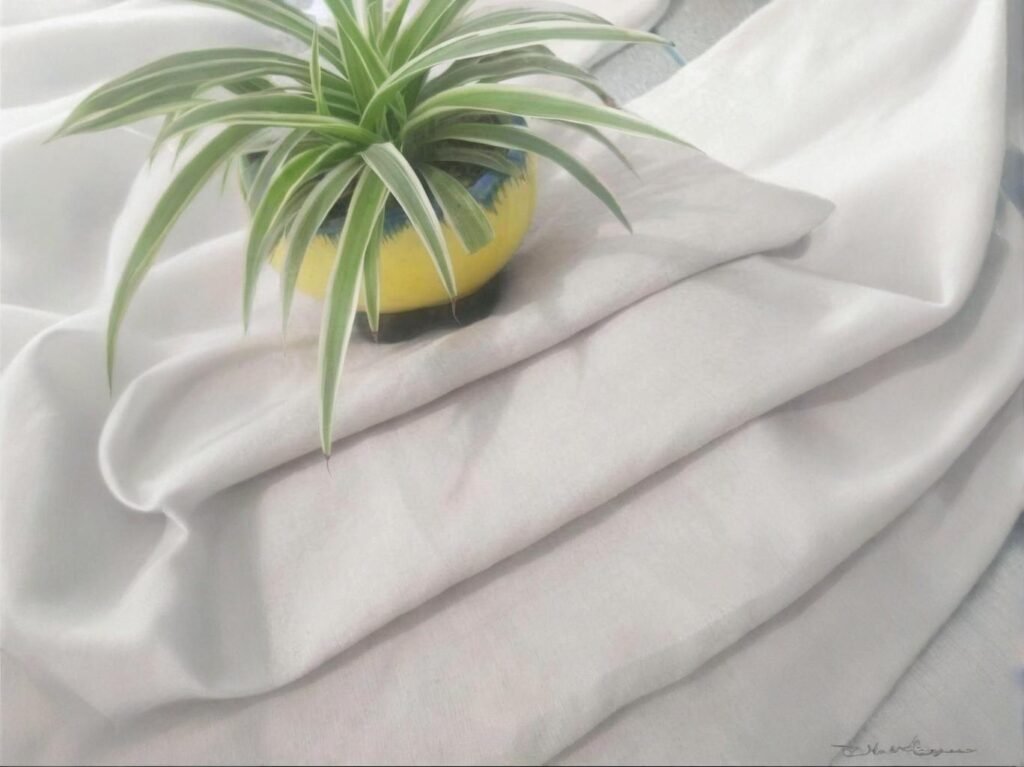
In the hospitality sector, certifications aren’t just nice-to-have—they’re increasingly non-negotiable. Textile certifications help hotels meet internal sustainability goals, regional compliance standards, and third-party eco-labels like LEED, Green Key, or Green Globe. For linen specifically, certifications provide traceability, chemical safety, and environmental accountability.
Yes, linen hotel textiles often require certifications such as OEKO-TEX, GOTS, ISO 9001, and sometimes EN/ASTM standards, depending on market and hotel group policy. These certifications ensure that the materials are free from harmful substances, produced ethically, and meet durability expectations for commercial use.
Most Common Certifications for Hotel Linen Programs
- OEKO-TEX® Standard 100
- Tests for harmful substances (e.g., formaldehyde, heavy metals, banned azo dyes)
- Required by many international hospitality groups for guest-facing textiles
- Applies to raw materials, dyes, and finished products
- GOTS (Global Organic Textile Standard)
- Covers organic cultivation of flax and ethical labor throughout the supply chain
- Demands eco-friendly dyeing and finishing
- Often used by wellness resorts or sustainability-focused properties
- ISO 9001 (Quality Management)
- Not specific to fabric, but often expected from OEM linen manufacturers
- Ensures consistent quality, traceability, and structured production management
- EN 12952-1 / NFPA 701 (Flame Resistance)
- Required in some jurisdictions for curtain and upholstery linen
- Especially enforced in hotels, resorts, and public venues across the EU and US
Hotel Brand Compliance Example:
| Hotel Chain | Linen Requirements | Mandatory Certifications |
|---|---|---|
| Marriott Group | Skin-safe, durable, sustainable | OEKO-TEX, GOTS (preferred) |
| Hilton Worldwide | Eco-compliant, fade-resistant | OEKO-TEX, ISO 9001 |
| Six Senses | 100% organic, fair labor supply chain | GOTS, Fair Trade Certified |
| Accor | Fire retardant in public areas, low VOC | NFPA 701, OEKO-TEX |
Case Study:
A resort in Seychelles seeking Green Globe certification found their Indian supplier couldn’t provide OEKO-TEX or GOTS documentation. They shifted to a certified mill in Turkey that not only offered both but also provided a digital traceability report—resulting in compliance approval within 30 days.
Procurement Tip: Ask for batch-specific certification numbers, not just logos on catalogs. Legitimate suppliers will provide certificates with scope, product category, and expiry dates.
How Can Hotel Textile Suppliers Customize Linen Fabric for Branding and Design Needs?
Linen’s natural character is versatile—but when paired with expert customization, it becomes a canvas for brand identity. Hotels seeking a differentiated guest experience increasingly rely on textile customization to tell their brand story.
Hotel textile suppliers can customize linen fabric through color dyeing, embroidery, weave patterns, digital printing, and finishing techniques like stone-washing or calendaring—allowing seamless integration with a hotel’s design and branding strategy. These options transform standard fabric into brand assets.
Linen Customization Strategies for Hotels
- Color Customization
- Pantone-matched dyeing allows exact replication of a hotel’s brand palette.
- Reactive dyeing ensures long-lasting, fade-resistant color.
- Ideal for pillow piping, drapery trims, or accent table linens.
- Logo & Monogram Embroidery
| Application Zone | Common Placement | Style Options |
|---|---|---|
| Pillowcases | Top corner, envelope edge | Satin stitch, chain stitch |
| Tablecloths & napkins | Center corner or hem | Raised embroidery, tone-on-tone |
| Spa linens | Center-back towel edge | Luxury branding, often gold/silver thread |
- Fabric Finish Types
| Finish Type | Effect | Ideal Use Case |
|---|---|---|
| Enzyme Wash | Soft touch, relaxed look | Bedding, pillowcases |
| Stone Wash | Vintage appearance, softened feel | Boutique suites, spa curtains |
| Calendared Linen | Polished surface, crisp hand | Formal dining areas, conference rooms |
- Custom Weaves or Blends
Some mills offer jacquard weave patterns with subtle brand motifs or create linen-blend compositions for specific hand feel or sheen.
Packaging & Presentation:
- Custom dust bags or fabric wraps for linens
- QR-tagged labels with sustainability or care info
- Folded with tissue inserts or eco-friendly bands for luxury presentation
Real Example:
A luxury glamping company in South Africa partnered with SzoneierFabrics to create custom 100% linen pillowcases featuring their tree-logo embroidery and a custom clay-colored dye tone to match the surrounding landscape. The outcome? A cohesive branding experience that carried through from the tent interior to the marketing photos.
Customization Tip: Lead time for dyed-to-match or monogrammed linen is typically 25–45 days depending on quantity. Plan color lab dips and embroidery approvals at least 6 weeks before shipment.
Linen is more than a fabric—it’s a statement of comfort, sustainability, and elevated guest experience. From regulating temperature in tropical suites to aligning with global eco-labels, linen delivers tangible advantages to hotels looking to impress today’s discerning traveler. Its adaptability across bedding, curtains, and table linens makes it a top-tier choice for luxury and design-forward hospitality brands.
If you’re looking for certified, customizable, and hotel-grade linen fabric with fast sampling, low MOQ, and full design support, SzoneierFabrics is your trusted partner. Contact us today to start developing your next hotel linen collection—crafted for comfort, built to last.
